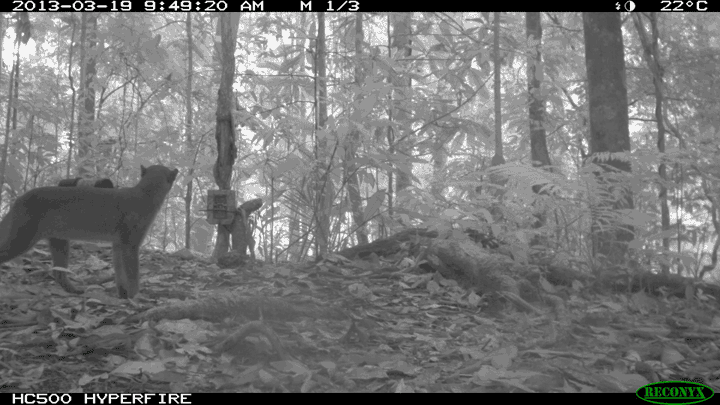bay cat (catopuma badia)
other names
Bornean Bay Cat
Bornean Red cat
Bornean Red cat
description
Its length head to bottom is 53-67cm long and its tail is 32-39cm. The Bay Cats height at the shoulder is around 28cm and weighs 2-4kg.
diet
It is a nocturnal hunter hunting for small rodents & birds.
rare sightings
Since the first Bay Cat was collected in 1874 their has only been 7 more sightings with this elusive creature.
In the 1950s a traveller saw some Bay Cat fur on two ceremonial Dayakn Hats.
In 1992 one was captured on the Sarawakian border.
In 1998 another Bay Cat was captured was taken and was photographed for the first time in history.
Only a handful of Camera traps have seen a Bay Cat.
In the 1950s a traveller saw some Bay Cat fur on two ceremonial Dayakn Hats.
In 1992 one was captured on the Sarawakian border.
In 1998 another Bay Cat was captured was taken and was photographed for the first time in history.
Only a handful of Camera traps have seen a Bay Cat.
breeding
Its gestation is unknown.
habitat
The Bornean Bay Cat is endemic to Borneo. It only lives in the centre of Borneo. This area is called the Heart Of Borneo. All sighting of Bay Cats have been seen in deforested areas and dense forest with limestone outcrops. But also lives in Malaysia.
threats
There is believed to only be 50 Bay Cats that are still alive and are classified as endangered. But in saying that because they are so elusive and were rediscovered by a camera trap I believe there is more out there but I still believe they are in big trouble. Scientists don't know a lot about their threats but are pretty sure Palm Oil is one of them.
how you can help
- Have a Palm Oil free diet.
- Spread the message.
- Support & raise money for Bay Cat conservation.
image credits
I didn't take any of these images.

